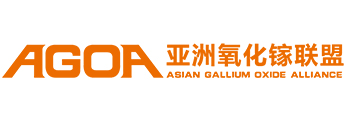

【Domestic Papers】Laser Writing of GaN/Ga₂O₃ Heterojunction Photodetector Arrays
日期:2025-08-12阅读:237
Researchers from the Zhengzhou University have published a dissertation titled "Laser Writing of GaN/Ga2O3 Heterojunction Photodetector Arrays" in Advanced Materials Interfaces.
Project Support
This work was financially supported by the Science and Technology on Plasma Physics Laboratory (grant no. JCKYS2021212010), the Natural Science Foundation of Henan (grant no. 222300420530), the National Natural Science Foundation of China (grant no. 11804335), and the Science and Technology Major Project of Henan Province (grant no. 221100230300).
Background
Photodetectors, which convert optical signals to electrical signals, are vital components in optoelectronic systems. Currently, photodetectors have been developed to detect light in the infrared (IR), visible, and ultraviolet (UV) regions. UV detection has garnered significant attention due to its widespread use in various fields, such as human health, environmental monitoring, and security. For instance, it can simulate the production of vitamin D in human body and eliminate bacteria. However, exposure to UV radiation can also lead to serious health issues such as cataracts, skin cancer, and accelerated aging. Consequently, the ability to detect UV radiation, which furnishes information about exposure to UV radiation, is essential for human health and the environment, as well as for various industrial, scientific, and security applications. At present, silicon is the most widely used material for UV detection. However, due to its small bandgap, silicon-based UV photodetectors often require the use of costly filters to block visible and IR light. A potential solution to this issue is to develop photodetectors based on wide-bandgap semiconductors, such as AlGaN, MgZnO, SiC, diamond, or Ga2O3, which only absorb UV radiation. Among these, Ga2O3 stands out as a promising option for UV detection due to its wide band gap, high chemical stability and thermal stability, and ease of preparation.
Abstract
Photodetectors play a crucial role in converting light signals into electrical signals and have significant applications in various fields such as communications, imaging, and sensing. However, the fabrication of a photodetector is a complex process that involves precise control of surface preparation, lithography, and deposition techniques. Here the study demonstrates that GaN/Ga2O3 heterojunctions can be fabricated utilizing laser processing to transform the surface of GaN into Ga2O3. The GaN/Ga2O3 heterojunctions exhibit good reproducibility, uniformity, and ability to operate under zero bias, with a responsivity of 110.22 mA W−1, a detection rate of 5.56 × 1011 jones, and an external quantum efficiency of 42.34%. Moreover, an 8 × 8 photodetector array based on GaN/Ga2O3 heterojunction is fabricated via laser writing and is demonstrated to have ultraviolet imaging capabilities. This report presents the pioneering fabrication of a photodetector array using laser writing. The findings offer a versatile and scalable approach for the production of large-area heterojunction photodetector arrays.
Conclusion
In this study, we have demonstrated the feasibility of creating GaN/Ga2O3 heterojunctions by oxidizing the surface of GaN through laser treatment. We have also successfully fabricated an 8 × 8 GaN/Ga2O3 heterojunction photodetector array using laser writing. Under zero bias, the photodetector exhibits a strong response to UV irradiation, with a light to dark current ratio as high as 104. The responsivity and detectivity of the photodetector are 110.22 mA W−1 and 5.56 × 1011 Jones, responsivity. Additionally, we have observed that the photodetectors are highly stable and repeatable and can be effectively utilized for UV imaging purposes. Our research presents a novel approach for the development of photodetector arrays utilizing laser writing techniques.


